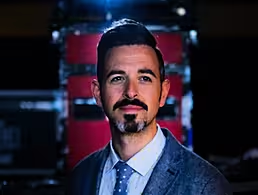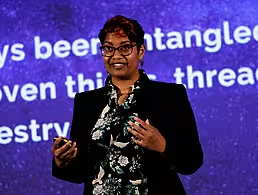Slack VP Ali Rayl shares what she has learned about building a remote work culture over the past seven months.
Ali Rayl, VP of customer experience at Slack, presented a virtual keynote on remote and flexible work for the Future Human 2020 audience last week.
Rayl started out by acknowledging that the past seven months have been hard, not least because of very simple, human reasons. “Humans are great at a great many things, but three of the things we deal with really poorly are change, uncertainty and prolonged stress. All three of those are bearing down on us right now,” she told the audience tuning in from around the world.
Offering a helping hand to get through this trying time, Rayl went on to explain what Slack has learned from the global rush to remote work.
Flexible work schedules
“This pandemic has forced our hand on many of these changes that research has been telling us to make for years,” Rayl said, citing flexible work schedules allowing people to work at their best as just one example.
“We now have two gifts making this possible. One is that we’ve regained a fair amount of time that we used to spend commuting. And the other is that we aren’t tethered to an office.”
In an anonymous survey of employees, Slack found that eliminating the commute was by far the most welcome change brought on by the Covid-19 pandemic.
“This is an enormous amount of time that we’ve reclaimed for our lives,” said Rayl. “People are finding great ways to take advantage of this in their personal lives, from getting more sleep to getting more time to work out, to getting more time with their family, to getting more time to cook. And this, as people, is enormously beneficial to us.”
Managers in particular can struggle with flexible work schedules and remote work. They might find it difficult to supervise work without the ease of an office for that oversight. Or they might be grappling with scheduling fixed appointments around unpredictable working hours.
However, Rayl dismissed these challenges and encouraged company leaders “to ask not what could go wrong, which is our tendency as people, but instead ask what could go right”.
“I’m not advocating for an ad hoc work schedule. It’s totally OK to expect people to have a schedule and to stick to it. But we do know that people are more productive and more engaged when we loosen the ties on the nine-to-five work day,” she said.
Rayl also let the managers of the world know that many employees already take this approach to work, whether it’s known to their managers or not. “They’re doing it whether you explicitly condone it or not, and this is actually really good and really healthy,” she said.
Managing by output
Crucially, Rayl advised company leaders not to take this new way of working in the wrong direction with tools such as monitoring software or unreasonable rules such as requiring employees to keep their webcam on all day.
“It’s a signal to employees that they aren’t trusted. Nobody thrives in an environment where they aren’t trusted, and this leads to disengagement, disgruntlement and ultimately is going to lead to employee attrition,” she warned.
Overall, this future of work we have entered into requires a shift away from managing by supervision to managing by output.
“Someone’s presence in the office or at their computer doesn’t produce any results for your business and it actually never did. It’s their work that you need,” Rayl added.
Asynchronous work
She recommended the adoption of asynchronous work practices in order to enable these flexible work schedules and an output-led management style.
Asynchronous work is put into practice through operations and culture. “From an operational standpoint, your company needs to rely much more heavily on communication tools and less on real-time conversations,” explained Rayl. Culturally, asynchronous work requires clear communication of timelines and discipline around setting them.
“It’s no longer enough to say, ‘Can you review this spreadsheet?’ It needs to be paired with a time horizon. So, ‘Can you review this spreadsheet by the end of the day tomorrow?’” Rayl explained.
“It’s going to require more discipline around deciding what is truly urgent and what can wait. The office was really good at providing us with instant results because you could pop by someone’s desk and get a question answered in two minutes. But that’s not the world we’re living in. And it turns out that if you take a moment to ask yourself when you really need something, you’ll discover that it’s often something that you don’t need immediately.”
Company culture
Preserving the company culture already cultivated at the office is also vital for remote work to work. For Rayl, it’s important to ensure the kind of unplanned, unstructured social interactions that were easily facilitated by a physical space do not get neglected when remote working.
“Exactly how you do this will be heavily dependent on your own company culture,” said Rayl, offering suggestions such as calendar bookings for casual drop-in conversations, ice-breaker chats with team members you might not know very well, and simply checking in at the top of each team meeting.
“I encourage you to try a few with your team, see what works and what falls flat, and just iterate from there. Because every team has a different dynamic and there’s not this ‘staying connected playbook’ that’s going to work for everyone.”
Want stories like this and more direct to your inbox? Sign up for Tech Trends, Silicon Republic’s weekly digest of need-to-know tech news.




